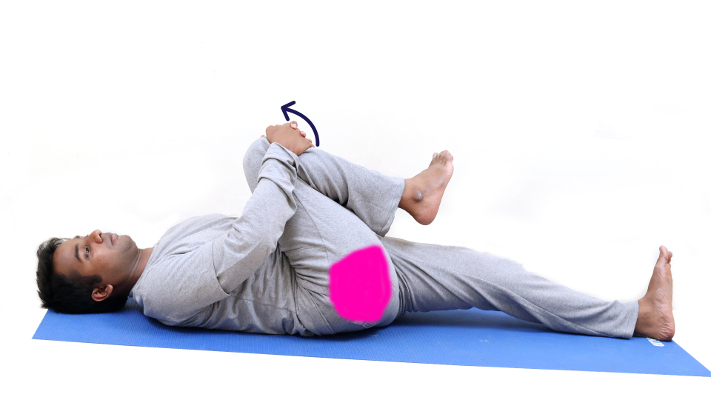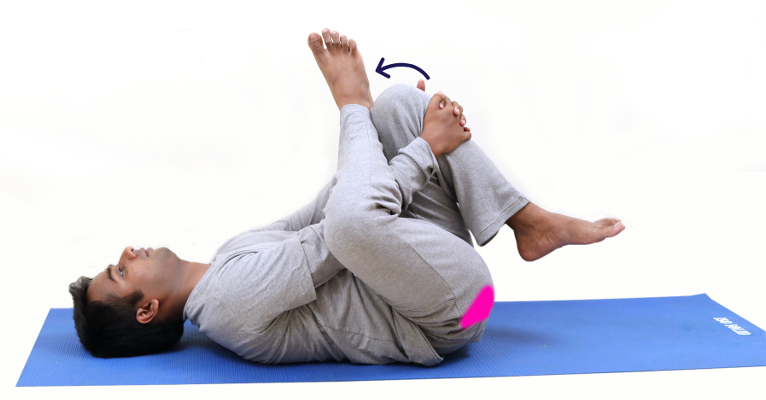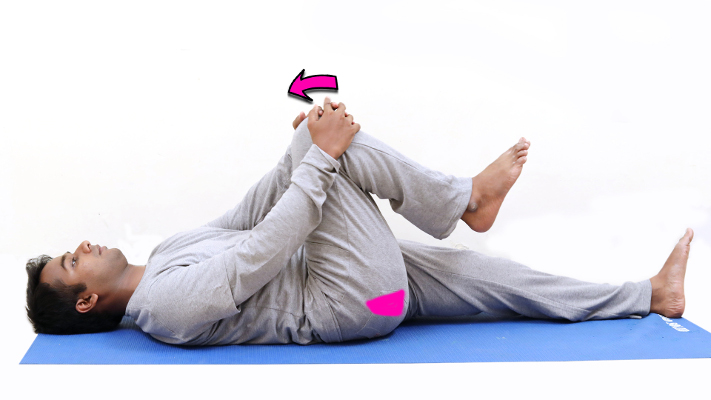
gluteas maximus
piriformis
quadratus femoris

Steps for doing:
- The coloured part is being stretched.
- This exercise Can be done either in Standing position leaning on the wall or in lying down position
- Flex right leg towards left side chest wall and upwards towards opposite shoulder joint as shown
- Hold the same position for 10-20 seconds, without holding your breath
In this video we are going to stretch gluteus maximus muscle
The coloured part in being stretched as shown
The arrow indicates the direction of stretch
- This muscle is responsible for lower limb dysfunction, and pelvic dysfunction
- Symptoms refer to lower lumbar spine, sacrum, buttock, thigh and leg regions.
- Symptoms may include pain, numbness, hypersensitivity, altered sensation,irritability and also Symptoms related to compression of adjacent blood vessels and nerves.
- Commonly related to disease such as sciatica, coccygodynia, sacroiliac joint dysfunction and others.

Steps for doing:
- The coloured part is being stretched.
- Lie down on your spine as shown
- Right leg crossed over left leg.
- Lift left leg towards chest as shown with both hands
- Hold the same position for 10-20 seconds, without holding your breath
In this video we are going to stretch piriformis muscle
The coloured part in being stretched as shown
The arrow indicates the direction of stretch
- This muscle is responsible for lower limb, and pelvic pain syndromes.
- Symptoms refer to lower lumbar spine, sacrum, buttock, perineum, posterior thigh, leg, and foot regions.
- Symptoms may include pain, numbness, hypersensitivity, altered sensation, irritability and also Symptoms related to compression of adjacent blood vessels and nerves.
- Commonly related to disease such as sacroiliitis, coccygodynia, sacroiliac joint dysfunction lumbar disc herniation and others.

Steps for doing:
- The coloured part is being stretched.
- Lie down on your spine as shown.
- Lift right leg upwards & towards left chestwall as shown.
- Right knee towards and above left shoulder.
- Hold the same position for 10-20 seconds, without holding your breath
In this video we are going to stretch Quadratus femoris muscle
The coloured part in being stretched as shown
The arrow indicates the direction of stretch
- This muscle is responsible for lower limb, and pelvic pain syndromes.
- Symptoms refer to lower lumbar spine, sacrum, buttock, perineum, posterior thigh, leg, and foot regions.
- Symptoms may include pain, numbness, hypersensitivity, altered sensation, irritability and also Symptoms related to compression of adjacent blood vessels and nerves.
- Commonly related to disease such as sacroiliitis, coccygodynia, sacroiliac joint dysfunction lumbar disc herniation and others.
 Brain and Spine Secrets
Brain and Spine Secrets